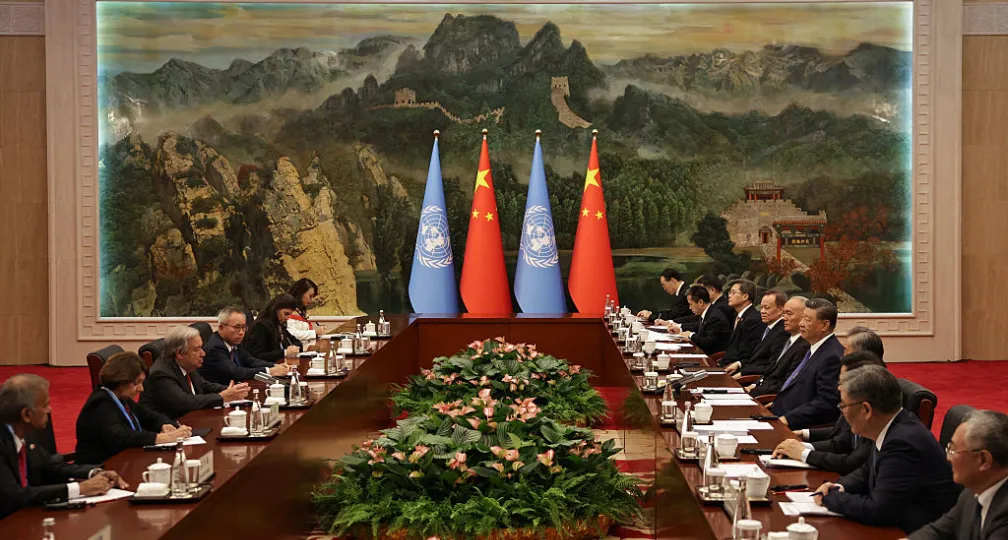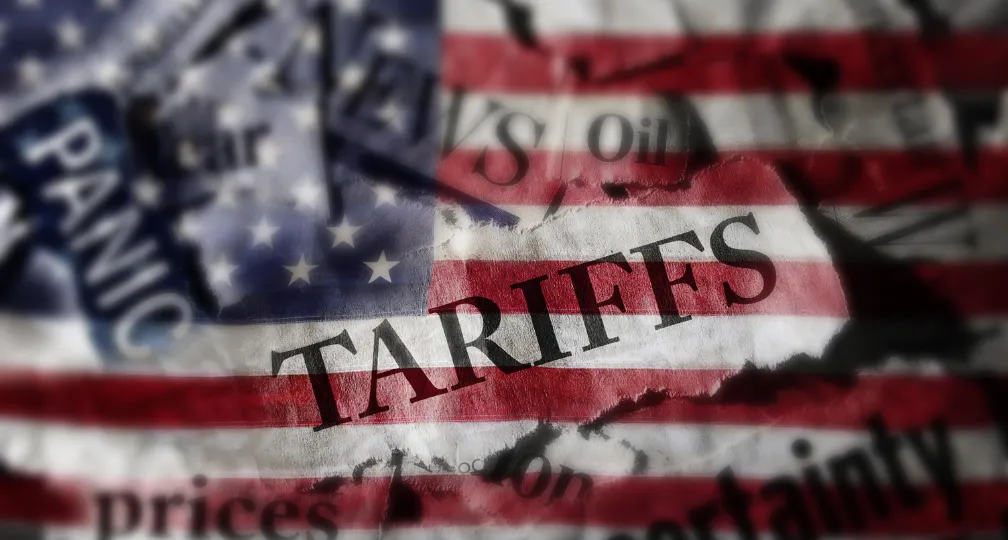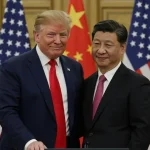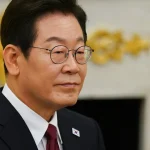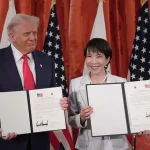The Case that it Could All Work Out (for Everyone Else)

The latest regulatory developments on economic security & geoeconomics
By Paul Nadeau, Visiting Research Fellow, Institute of Geoeconomics (IOG)
China, U.S. Agree to Cooling-Off Period: On May 12, negotiators from China and the United States agreed to temporarily lower tariffs for a 90-day period to allow for further discussions. China’s tariffs on the United States will be reduced from 125 percent to 10 percent while U.S. tariffs on China will be reduced from 145 percent to 30 percent (20 percent tariffs under IEEPA for China’s role in the fentanyl trade plus a 10 percent baseline tariff). The sectoral tariffs (those on steel & aluminum, autos, etc.) will not be reduced for all tariffs and the tariffs imposed on China during the first Trump administration will remain in place. U.S. Treasury Secretary Scott Bessent described the 145 percent tariffs announced on April 2 as a “ceiling” and that 10 percent tariffs would be a floor and that it would be “implausible” for tariffs to go lower than that. Both sides committed to further discussions.
UK and U.S. Reach Agreement: On May 8, U.S. President Donald Trump and British Prime Minister Keir Starmer announced an agreement between their countries to address the tariffs that Trump announced on April 2. The deal will cut tariffs on UK-made cars to 10 percent under a 100,000 vehicle export quota, a reciprocal quota for beef, jet engines and plane parts will be exempted from U.S. tariffs, the UK agreed $10 billion worth of planes from Boeing, further agreed that it will improve market access for U.S. chemicals and machinery and would address other tariff and nontariff barriers to market access. U.S. tariffs on steel and aluminum imports from the UK were reduced to zero from 25 percent as part of what the U.S. announcement called a “new trading union”.
The agreement is not legally binding and discussions on trade issues are ongoing. Digital services taxes, a point of contention within the Trump administration and the subject of an ongoing Section 301 investigation, were not addressed in the agreement but the UK statement on the agreement suggested that talks on digital issues were ongoing.
India and UK Reach Trade Deal: India and the United Kingdom reached an agreement on a trade deal that is the UK’s largest trade agreement since Brexit. Under the deal, 90 percent of tariff lines will be reduced for British exports to India, with 85 percent becoming fully tariff-free in ten years, while India will reduce tariffs on 99 percent of tariff lines, and will improve market access for services like information technology. While the agreement is a culmination of three years of discussions, experts believe that the prospect of Donald Trump’s global tariffs provided an added motivation for the two parties to reach a deal. The deal is expected to go into effect in around 12 months.
U.S. Modifies Auto Tariffs: On April 29, the Trump administration announced modifications to its auto tariffs of 25 percent, which U.S. Treasury Secretary Scott Bessent said was to “give automakers a path” to bring auto manufacturing jobs back to the United States by giving them a period to adjust to tariffs. The modifications include a rebate for one year of 3.75 percent relative to the sales prices of a domestically assembled vehicles, while in the second year, the rebate would equal 2.5 percent of a vehicle’s sales price and would cover fewer parts.
Trump Administration to Draft New AI Controls: The Trump administration is not expected to enforce the Biden-era AI diffusion rule, a global which created three broad tiers of countries for regulating the export of advanced chips from Nvidia Corp. and others, and will instead draft its own rules that will focus on direct negotiations with other countries on AI technology sharing. While the goal of limiting China’s access to advanced semiconductors for technologies like AI is unchanged, the Trump administration’s goal is to create a framework that would allow countries greater opportunities to negotiate access.
Trump Administration Initiates National Security Investigations into Commercial Aircraft: The Trump administration initiated an investigation on May 1 under Section 232 of the Trade Expansion Act of 1962 that will look into how imports of commercial aircraft, jet engines, and parts may impact U.S. national security. The investigation will look at “the concentration of U.S. imports” of those items “from a small number of suppliers and the associated risks” as well as “the impact of foreign government subsidies and predatory trade practices on the competitiveness” of the industry. The aviation industry has been governed by a 45-year old treaty which allows aircraft and aircraft parts to be shipped across borders mostly duty free.
U.S. Announces New Iran Sanctions: The United States announced a series of sanctions related to Iran. On April 28, the U.S. Treasury Department sanctioned three vessels and their owners for providing support to the Iranian-backed Houthis in Yemen. On April 29, the Treasury Department designated six entities and six individuals based in Iran and China for their role in a network that procures ballistic missile propellant ingredients on behalf of Iran’s Revolutionary Guard Corps. On April 30, the U.S. Department of State imposed sanctions on seven entities engaged in the illicit trade of Iranian petroleum and petrochemical products.
U.S. Treasury Department Sanctions Mexican Cartel: On May 1, the U.S. Treasury Department announced sanctions against a Mexican cartel involved in fentanyl trafficking. The sanctions specifically target three Mexican nationals and two Mexico-based entities involved in a drug trafficking and fuel theft network linked to the Cartel Jalisco Nueva Generacion (CJNG).
UK Implements New Sanctions against Russia: The United Kingdom implemented a series of new sanctions against Russia on April 24. The new measures prohibit the export of certain chemicals, electronics, machinery, plastics and metals which the United Kingdom have been used by Russia in its invasion of Ukraine.
Switzerland Targets Hamas with New Law: A Swiss law that aims to prevent Hamas from using Switzerland as a safe haven will go into effect on May 15. The law, which was passed in December, will make it easier for Swiss police to enforce entry bans and expulsions, and makes it more difficult for Hamas to access financial services in Switzerland.
Analysis: The Case that it Could All Work Out (for Everyone Else)
The Trump administration entered office with an ambition to reshape the global economy and the U.S. role in it. While Trump’s hope is that the reconfiguration will result in economic growth for the United States, his implementation of trade barriers and the unpredictability may indeed have the effect of reconfiguring global trade – but away from the United States. How that readjustment goes will have a major impact on U.S. centrality in the international system, and that might be a silver lining to the disruption and uncertainty.
Because even if the unipolar moment after the end of the Cold War was fleeting, the United States is still remarkably central to global affairs. It’s the world’s largest economy, holds the world’s reserve currency, is the world’s largest consumer market, has the world’s largest military, has the world’s largest financial markets, most of the world’s most powerful tech companies, is the world’s largest donor to development in absolute terms, and the list could continue. As with most things, there are good and bad aspects to this. The “good” includes things like the dollar facilitating global trade, a consumer market that absorbs excess demand, and is generally big enough in wealth and military power to overcome many global collective action problems if U.S. leadership chooses. The “bad” includes things like the worsening of global issues if U.S. leadership decides not to intervene or intervenes poorly, consumer demand that imbalances global financial and trade flows, outsized control over key global networks that the United States can uniquely exploit for better or worse, but all these problems could essentially be summarized by recognizing that the United States is uniquely large and has outsize control over events that make the outcome of world events depend on its leadership making certain choices.
In abstract, it would be better if global affairs became more decentralized and less dependent on whoever happens to occupy the Resolute Desk in the Oval Office. Yet the reason U.S. centrality persists is partly because the United States has the capacity to give substance to its insistence on global centrality, and partly because U.S. power still overcomes collective action problems in global affairs that other countries can’t or won’t provide.
For the Trump administration, U.S. centrality is their leverage in bringing the world to the table to negotiate tariffs. Their assumption is that U.S. centrality in the global economy so essential that countries will pay any price and accede to any terms for access. But the tepid progress of the Trump administration’s dash to achieve 90 deals in 90 days in advance of the imposition of the April 2 tariffs has shown both that other countries have plenty of leverage of their own they can bring to bear and that the Trump administration appears to have severely overestimated its own leverage in negotiations.
After all, while U.S. negotiators are occupied with negotiating these deals to accommodate Trump’s tariffs, the rest of the world is occupied with reorganizing its economic relationships. There are already meaningful steps being taken to reorient from the U.S. market. Firms in Canada, which historically has depended on the United States for 75 percent of its exports, are already beginning to look past the United States for markets. Brazil is stepping in to sell more soybeans to China to partly make up for the disruption to China’s supply from tariffs on U.S. agricultural products. Efforts to reshore and diversify supply chains following the COVID-19 pandemic will continue but will now increasingly begin to account for Trump’s tariffs. Done well, these efforts could lead to a reorientation of commercial and financial flows that’s more diversified, less prone to unilateral coercion, and brings so-far underserved markets deeper into the global economy.
But there are also signs that those steps have a lower ceiling than what would be ideal. Redirecting exports to emerging markets will require significant investments in ports, rail, and other transportation infrastructure to handle the increase in imports, which itself needs funding that many of these countries don’t have. Other countries will need to try to replace U.S. funding, but their own funding is already stretched, particularly as Europe and East Asia try to increase their defense spending. China’s potential to replace the United States is not insignificant given the size of its market, willingness to spend, and efforts to initiate new multilateral platforms, but it faces its own significant economic and political challenges, has its own issues with regional coercion and domestic repression, and has shown a clear willingness to exploit network centrality for its own gain. Deepening and diversifying bilateral trade ties can only go so far as well. The United Kingdom’s deal with India, which is symbolic for both in terms of finding arrangements between large economies other than China and the United States, will only add 0.1 percent to the UK’s growth.
As a result, any effort to reorient the global economy into a more decentralized framework will need an institutional infrastructure to build upon to overcome collective action problems, harmonize efforts and rules, and pool resources. Recent groupings like CPTPP and BRICS along with established groupings like ASEAN and the European Union provide a start, while some efforts at institutional diversification, like the China-initiated Asian Infrastructure Investment Bank or BRICS, have been underwhelming or inconsistent in terms of organization and follow-through. It can be hoped that without the United States and its resources to fall back on, these institutions can find an added initiative to meaningfully replace some of the global goods that will be lost as Trump reorients the direction of the United States.
The world might not have another choice. Trump seems determined to change the U.S. economic relationship with the rest of the world, and if countries want to continue to enjoy many of the global goods provided by U.S. centrality, they will need to figure out how to do that themselves. It doesn’t need to be a full replacement – the United States is too large and too wealthy to ever become completely irrelevant, and some features of U.S. centrality, like dollar dominance and the U.S. military, are too embedded to fall away in any foreseeable future. But if Trump’s realignment can drive countries and firms to give greater form to the various inchoate efforts to decentralize global governance, that would be a positive outcome for everyone.
(Photo Credit: Chip Somodevilla / Getty Images)
Disclaimer: The views expressed in this IOG Economic Intelligence Report do not necessarily reflect those of the API, the Institute of Geoeconomics (IOG) or any other organizations to which the author belongs.
API/IOG English Newsletter
Edited by Paul Nadeau, the newsletter will monthly keep up to date on geoeconomic agenda, IOG Intelligencce report, geoeconomics briefings, IOG geoeconomic insights, new publications, events, research activities, media coverage, and more.


Visiting Research Fellow
Paul Nadeau is an adjunct assistant professor at Temple University's Japan campus, co-founder & editor of Tokyo Review, and an adjunct fellow with the Scholl Chair in International Business at the Center for Strategic and International Studies (CSIS). He was previously a private secretary with the Japanese Diet and as a member of the foreign affairs and trade staff of Senator Olympia Snowe. He holds a B.A. from the George Washington University, an M.A. in law and diplomacy from the Fletcher School at Tufts University, and a PhD from the University of Tokyo's Graduate School of Public Policy. His research focuses on the intersection of domestic and international politics, with specific focuses on political partisanship and international trade policy. His commentary has appeared on BBC News, New York Times, Nikkei Asian Review, Japan Times, and more.
View Profile-
 Japan-India Defense in a Fragmenting Indo-Pacific2025.12.10
Japan-India Defense in a Fragmenting Indo-Pacific2025.12.10 -
 The “Economic Security is National Security” Strategy2025.12.09
The “Economic Security is National Security” Strategy2025.12.09 -
 India - Japan: The Glimpse of a Shared Vision2025.12.05
India - Japan: The Glimpse of a Shared Vision2025.12.05 -
 Beijing’s ‘Globalist’ Agenda Under Trump 2.02025.12.01
Beijing’s ‘Globalist’ Agenda Under Trump 2.02025.12.01 -
 Trump’s Tariffs Might Be Here to Stay – No Matter Who’s in Power2025.11.28
Trump’s Tariffs Might Be Here to Stay – No Matter Who’s in Power2025.11.28
 Event Report: The Trump Tariffs and Their Impact on the Japanese Economy2025.11.25
Event Report: The Trump Tariffs and Their Impact on the Japanese Economy2025.11.25 The Real Significance of Trump’s Asia Trip2025.11.14
The Real Significance of Trump’s Asia Trip2025.11.14 The long road to a South Korea-U.S. trade deal2025.11.26
The long road to a South Korea-U.S. trade deal2025.11.26 India’s Structural Reforms: Opportunities and Risks2025.11.14
India’s Structural Reforms: Opportunities and Risks2025.11.14 Can Takaichi Build on a Successful Summit?2025.10.31
Can Takaichi Build on a Successful Summit?2025.10.31





